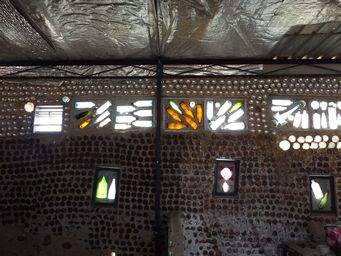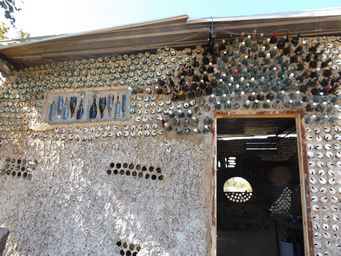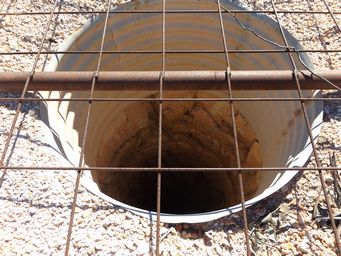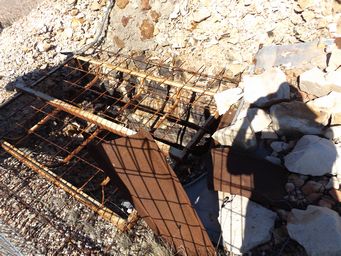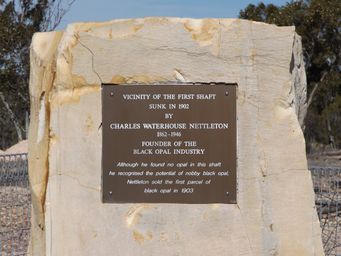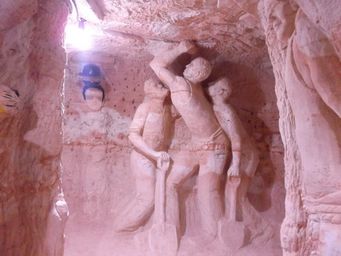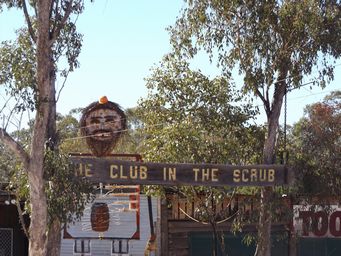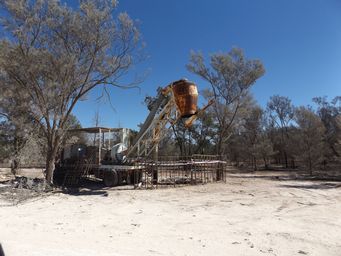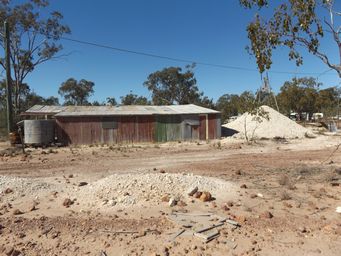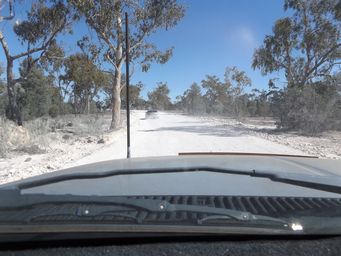Australia So Much to See
New South Wales - Lightning Ridge
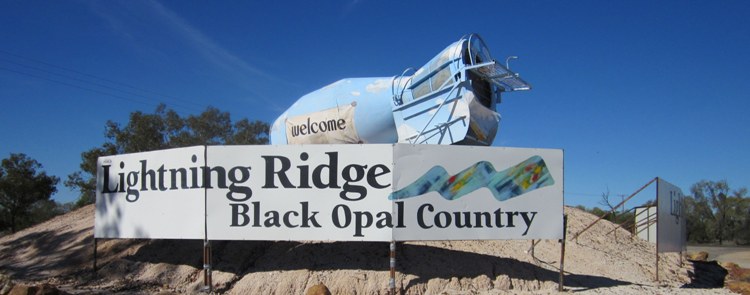
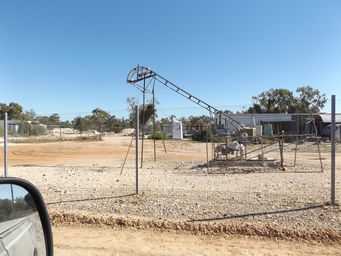
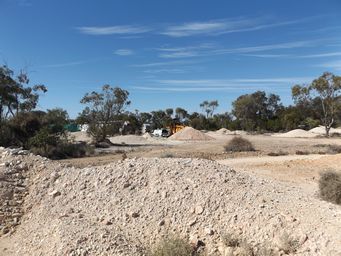
We reached the opal mining town of Lightning Ridge at the start of their four day Opal Festival. This was not planned, and the
town was crowded.
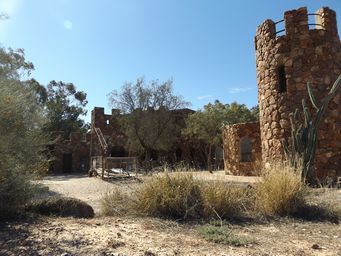
The name Lightning Ridge is said to have originated when in the 1870s some passers-by found the bodies of a farmer, his dog and 200 sheep which had been struck by lightning. From Wikipedia
Wallangulla, the original name for the town, was from an
Aboriginal dialect word meaning ‘hidden fire stick’, probably a lightning bolt. From Myth of the Black Opal
What is an opal? Gem Story defines an opal as "Non crystallised minerals made by silicon dioxide combined with water". It takes five six million years to form an opal one centimetre across. Each opal is unique, and differs in colours and patterns. Even colours on an opal can vary in different lights. Opal is the national gem stone of Australia.
Two other main types of opal are found in Australia. White opal
has a milky background and a pearly appearance. This is the most common and is found around Coober Pedy, Andamooka and White
Cliffs. Boulder opal is named from the way it has formed naturally in an ironstone rock. These are found mainly
in Queensland in areas including Quilpie, Winton, Yowah, Toompine and Eromanga.
A guide from the Visitor Centre outlines a number of “Car Door” Self Drive Tours around the town. Each drive is allocated a
different colour, and car doors in that colour mark the way.
The Red Car Door drive took us through the original town
area (Wallangulla), past shacks, shafts and piles of scree. At the highest point, 170 metres above sea level, is Amigo’s Castle.
The Blue Car Door drive includes a walk-in underground mine self tour. With no lifts to go down into the mine, we passed on
this opportunity. Bevan’s Cactus Garden features over 2300 species of cacti and has an entry fee of $10 per person.
The Green Car Door drive is a longer tour to a lookout on a hill 160 metres above sea level, where the first shaft was dug by Charles
Nettleton in 1902. Hand dug narrow shafts four foot by two foot were dug with pick and shovel (above right). There
are also round shafts which were mechanically dug later (at right). Visit the beer can house, which was built in 1977 from cans and
bottles set in concrete (below).
The Yellow Door drive passes opal fields and mining relics, including Three Mile Opal Field and Lunatic Hill, where the second
settlement called Nettleton grew, with the drive culminating at the amazing Chambers of the Black Hand. We took a courtesy bus
which collects people who have booked from the various accommodation venues. See more about Chambers of the Black Hand.
The Orange Car Door drive is much longer and takes you back in time. Visiting the Grawin Glengarry opal fields, on dusty white
roads you will pass many active private opal mines, mullock heaps where visitors can still find small opals, and take a look at how
mining was a hundred years ago before mechanisation and big mining companies that dominate mining in other areas. Visit quaint
hotels which allow overnight parking free or low cost.
To commence this drive, return to the Castlereagh Highway from
Lightning Ridge and head south for around five kilometres. Near Stanley the Emu, Llanillo Road turns south east for 37 kilometres
to the tiny rural town Cumborah. Turn north towards Goodooga for around fourteen kilometres before turning off the sealed road
to the Grawin Glengarry Opal fields. Orange car doors mark the turns.
Roads were smooth, white and dusty with the finely powdered sandstone from the diggings.
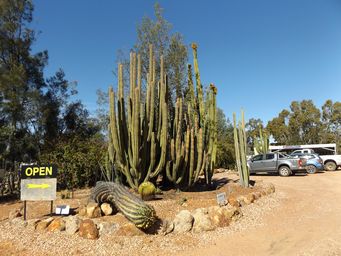
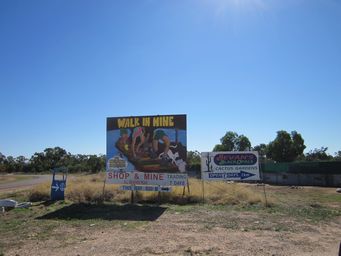
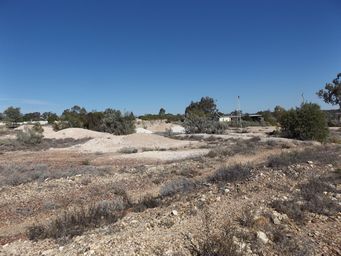
The original settlement in the opal fields called Wallangulla, formed here where seam opals and nuggets of opal were first mined in
1905. A school opened in 1907 with 21 pupils. Business licences were granted - a baker, store, post office, billiard room
and cordial shanty. In 1908 Nettleton settlement began below Lunatic Hill.
In 1907, Surveyor AW Mullen laid out a new town on land least likely to be opal bearing, equidistant from the two settlements, gazetted on 1908 as Wallangulla after the first settlement. The new town expanded over the old diggings to become today's Lightning Ridge. Wallangulla soon became known as Lightning Ridge, but the new name was not gazetted until 1963.
Wallangulla area backyard mining (above) and Amigo’s Castle (below)
Blue car door drive, near the Walk in Mine (above), Bevan’s Cactus Gardens (above right) and more mine diggings which are all around
Lightning Ridge (at right).
